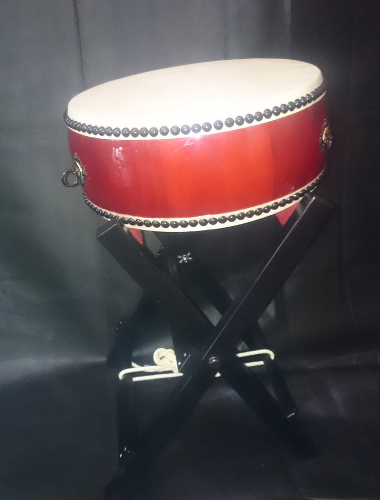
Evidence of ki can be found in facial expression, kiai (powerful yells to encourage self and others), the energy generated by a drummer when playing, the focus a drummer carries into performance, and whether the energy flowing from drummer to drummer draws the listener into the music. Ki – means “energy”, “vitality” and the drummer’s commitment to a “whole body” experience. From this broad exposure and with Kodo’s encouragement, Hinode Taiko has evolved a distinct visual style, enriched by synthesizing all that we have learned, rather than adhering to just one “school”. Despite (or perhaps because of) our distance from other taiko groups, Hinode Taiko has absorbed influences from many sources, including most of the groups listed above. Kata refers to the stance and movements used in a particular piece, or by a particular group. Other core concepts: Kata – means “form” or “shape”.

Even the most complex pieces are choreographed with these values in mind. Hinode Taiko drummers strive to incorporate three values into every drumstroke: ergonomic efficiency (“feel good”) appropriate sonority (“sound good”) and appropriate gesture & affect (“look good”). Originally used to accompany Nichiren Buddhist chanting. Uchiwa-daiko – a single-headed drum shaped like a fan, usually played with one bachi (drumstick). Often played by two drummers (one at each drumhead). Hinode Taiko features three sizes of nagado-daiko ranging in weight from 10 to 110 pounds: Kodaiko – a drum less than 1 foot in diameter, sometimes called a “sumo” from its use at sumo tournaments Chudaiko (also called wadaiko, miya-daiko, chodaiko, or “ josuke“) – medium-sized, the core instrument of most taiko performances and Odaiko – the largest of all taiko, whose sound is often likened to rolling thunder. In Japan, nagado-daiko are made of hollowed-out logs of expensive zelkova wood in North America, they are usually made from oak barrel staves. Nagado-daiko – these are drums with drumheads nailed directly to a drumshell longer than it is wide. A really large okedo may be placed horizontally on a tall stand and played by two drummers at the same time, one at each drumhead. Medium-sized okedo may be played “Eitetsu-style” (on a drumstand, named for the celebrated drummer Eitetsu Hayashi who pioneered this approach) or carried on a shoulder strap while being played ( katsugi okedo = “slung okedo”). Player may stand or be seated on the ground while playing, depending on the height of the drumstand (dai).

Shime (or shime-daiko) – small drum with characteristic high pitch caused by tightening the drumheads with ropes or bolts. Relatively lighter in weight and construction than nagado-daiko (see below). Okedo-daiko – these are drums with drumheads sewn to rims that can be tightened or loosened, thereby raising or lowering the pitch of the drum.


 0 kommentar(er)
0 kommentar(er)
